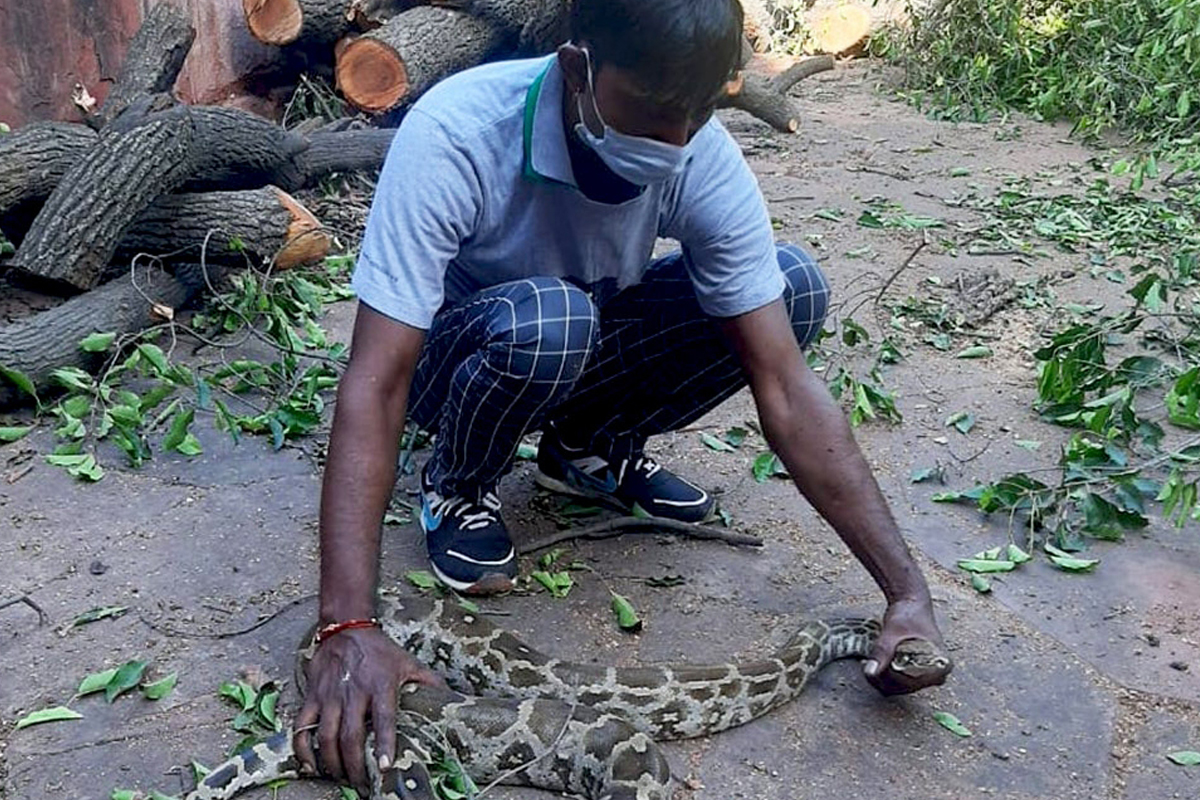Radhikka Madan captivates fans with breathtaking Taj Mahal photos
Radhikka Madan shares beautiful Taj Mahal pictures on Instagram and gears up for her role in the action-drama 'Subedaar' alongside Anil Kapoor.
The seven-foot python was rescued by the Wildlife SOS team and was later released into the wild.

Photo: IANS
While humans can not enter the Taj Mahal due to the Covid-19 forced closure, a huge python had a merry time slithering around as the sole visitor to the 17th century monument of love.
But its free entry attracted the notice of the security guards who immediately summoned a team of the Wildlife SOS.
Advertisement
The seven-foot python was rescued by the Wildlife SOS team and was later released into the wild.
Advertisement
An official said, “The Wildlife SOS team has rescued a python which had entered the Taj Mahal premises on Monday evening. It was spotted outside the Taj Museum, located in the western side of the monument.”
A two-member team geared with necessary rescue equipment and protective gear carried out the operation. Although non-venomous, a python’s bite can be injurious, so it requires swift skills on the part of the snake rescuers to handle the reptile. The python was later released into a suitable habitat.
Kartick Satyanarayan, Co-founder and CEO of Wildlife SOS, said, “We are thankful to the security personnel at the Taj Mahal for their support and for alerting us about the reptile. The python must have wandered out of the Taj Nature Walk green belt, which is home to a variety of wildlife species.”
In another incident, a five-foot long python was rescued from the Irrigation Department office of Agra division. This was followed by the rescue of another python from a bajra field in Farah, Mathura.
With the monsoons flushing out snakes from their burrowed holes and shelters, the Wildlife SOS helpline is flooded with “distress calls” about snake sightings across Agra and Mathura.
Baiju Raj M.V, Director of Conservation Projects for Wildlife SOS, said, “We have rescued over five pythons in the past week. Pythons need large undisturbed spaces to move around — if we encroach on their habitats, we really mustn’t be surprised if they do the same.”
Advertisement